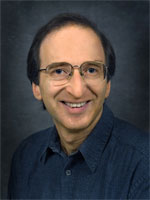| Research
|
|
|||||||||||||||||||||
|
Check out the joint Fermilab/SLAC publication symmetry.
|
Superconducting cable tech takes step toward marketplace
DOE's Oak Ridge National Laboratory and SuperPower Inc., a Schenectady, N.Y., superconducting wire manufacturer, recently signed a license agreement to use an ORNL-developed technology that can lower the cost of producing superconducting wires for more efficient transmission of electricity. The licensing agreement is part of a national effort led by DOE to research, develop and ultimately transfer energy technologies from DOE national laboratories to the global marketplace. Incorporating these high temperature superconducting wires and power equipment into the nation's electric grid will help meet rapidly growing demand for energy in an energy-efficient, cost-effective manner. "This licensing agreement continues the long history of successes moving DOE technology from its labs to the marketplace," Patricia Hoffman, DOE principal deputy assistant secretary for Electricity Delivery and Energy Reliability, said. "High temperature superconductivity is a revolutionary and cross-cutting technology that can further the Administration's long-term effort to transform our nation's electricity infrastructure and provide a safe, reliable and affordable stream of electricity to all Americans." Superconductors are special materials with no electrical resistance at extremely low temperatures. High temperature superconductors (HTS), discovered in 1986, lose resistance at warmer (though still very cold) temperatures than conventional superconductors. Cooled by cheap and abundant liquid nitrogen, high temperature superconductors can be used to make lighter, smaller, more efficient, higher capacity power devices; relieve congested power line networks; and increase power transmission capacity. Second generation, or 2G, wires made by depositing high temperature superconducting materials onto inexpensive metal templates coated with ceramic buffer layers will make high temperature superconducting wires less expensive to produce. ORNL's pioneering research on 2G wires includes discovery of lanthanum-manganese-oxide as a buffer material that can be formed rapidly using commercial film-deposition processes. "This agreement with SuperPower is a great example of ORNL working with industry and delivering the science and technology to help address the nation's energy challenges," ORNL Director Thom Mason said.Submitted by DOE's Oak Ridge National Laboratory |


